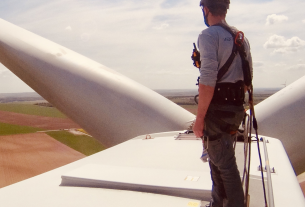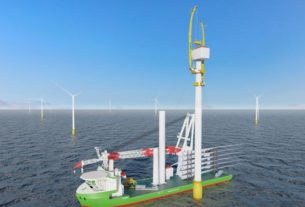United Kingdom – Floating offshore wind developer Equinor has designed a new floating wind concept that will promote standardization in the industry and optimize prospects for local supply chains.
Although it confirmed its commitment to Scotland earlier this year, the offshore energy corporation recently disclosed its preferred floating wind foundation design if it is successful in ScotWind. In order to allow manufacturing and assembly to be dependent on local supply chain capabilities, the Wind Semi, a semi-submersible wind turbine foundation, was built with flexibility.
Equinor has established a set of design principles and solutions that can be applied across floating concepts to ensure that the technology can be deployed cost-effectively while maximizing local benefits.
Equinor built the world’s first floating wind farm, Hywind Scotland (30 MW), in 2009 and put it into service. As of 2017, Hywind Scotland has routinely outperformed other UK wind farms in terms of capacity factor, proving the actual potential of offshore floating wind.
The Wind Semi has several features making it particularly suited for harsh waters, and solutions that can maximize the opportunities for the Scottish supply chain:
- Increased dependability: By introducing a passive ballast system, the Wind Semi has a simple substructure design, reducing the risk of system failure and the amount of maintenance needed
- Simpler, more robust design: A flat plate design that is free from bracings, heave plates and complicated nodes that are prone to fatigue cracking
- Flexibility towards the supply chain: With a harbour draught of less than 10 m, the Wind Semi’s turbine integration can be assembled at most industrialised ports. The Wind Semi’s simpler flat plate design enables the substructure to be built in blocks that can either be fabricated locally and/or shipped from other locations.
Equinor does not have a preference for one floating wind concept over another. Design choices are heavily influenced by factors such as water depth, the environment near shipyards and ports, and the specializations and capacity of the local supply chain.
Full-scale floating wind farms must be competitive by using the most cost-effective concept design and maximizing fabrication efficiency. Equinor will work hard in Scotland to create a more competitive supply chain capable of delivering the ScotWind floating projects on time and on budget while also ensuring their safety. Particularly in Scotland and the rest of the UK, Equinor will engage closely with domestic supply chains to maximize the prospects for local suppliers and communities.




